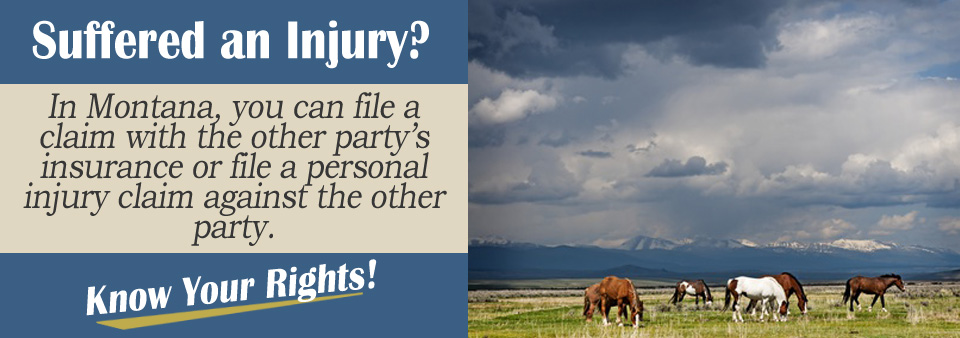You are trying to recover from injuries that you think were caused by negligence. Whether your injuries stem from a car accident, a defective product, or medical malpractice, you have the right to file a personal injury claim in Montana.
To get help with your personal injury claim, you may want to contact a personal injury attorney who takes cases in your area. Your attorney can help with making sure you apply on time and with proper evidence.
How Do I File a Claim in Montana?
If one step is to hire a personal injury lawyer, then what are the subsequent steps that get you personal injury help in Montana?
Pleadings
After you hire an attorney, your lawyer files a pleading to the court that presents your case. The document filed is called the complaint, and it should contain the following information.
- Describe the events that led up to the incident
- Explains in detail the symptoms of each injury
- Establishes a legal relationship between the defendant and the plaintiff
- Presents a recommendation for the amount of monetary damages
The defendant’s lawyer responds to the pleading with a document that is called the answer.
Discovery
The discovery phase allows both parties to collect evidence that is shared during a meeting. Some of the evidence shared includes police reports. medical records, and receipts for repairing property damage. Written requests for admissions of fact and depositions of the defendant, plaintiff, and witnesses typically play a role in the discovery phase of a Montana personal injury claim. During the discovery phase, the attorneys representing each party involved in the civil lawsuit may submit legal filings that request the court act in specific ways.
Civil Trial
Before a civil trial, both parties submit a brief to the judge overseeing the lawsuit that describes the legal arguments to be made, as well as the evidence that is expected to be presented during the trial. Montana allows for the formation of a petit jury, which can consist of between six and 12 members that hear a civil lawsuit. If the jury system is used for your personal injury claim, both attorneys have the right to exclude a certain number of potential jurors.
What is the Statute of Limitations in Montana?
You cannot expect to get personal injury help in Montana unless you file your claim before the statute of limitations runs out. Montana law gives plaintiffs three years after the date of an incident that caused personal injuries to file a claim.
Establishing the date when the incident took place involves referring to a document like a police report or the medical records created by your healthcare provider. If you fail to file a claim before the deadline of three years, then you can expect the court clerk to dismiss your claim.
How Do I Prove Negligence in Montana?
You might file an insurance claim and/or a civil lawsuit, only to discover the other party insists that you should be held at least partially responsible for the incident that caused you injuries. Montana operates on a modified comparative fault model, which means both parties can share the legal liability for causing an event to take place that harmed the plaintiff.
The modified part of the comparative fault model used in Montana prevents plaintiffs from collecting any monetary damages if the court rules the plaintiff was more than 50 percent responsible for causing the incident in question.
Collecting and organizing evidence is the key to winning a personal injury claim and/or lawsuit. Medical records can establish how much money you have paid out to diagnose, treat, and rehabilitate your injuries. Your healthcare provider should submit a prognosis of your injuries, which might allow you to qualify for future payments that take care of your medical bills. Witness accounts of the incident can support the hard evidence that you submit during a civil trial.
What Kind of Compensation Can I Receive in Montana?
Getting Montana personal injury help is all about receiving just compensation for your injuries. Medical expenses, repairing property damage, and recovering lost wages represent the three most common types of monetary damages awarded in personal injury cases.
You might also be eligible for non-economic damages, such as for the pain and suffering you experienced after the incident that caused you one or more injuries. Establishing an accurate amount for pain and suffering can be difficult to do, which is why Montana has set a maximum amount of money awarded for non-economic damages at $250,000 for medical malpractice claims.
How Do I Get Personal Injury Help in Montana?
Complete the Free Case Evaluation on this page to get connected with an independent, participating attorney who subscribes to the website.
